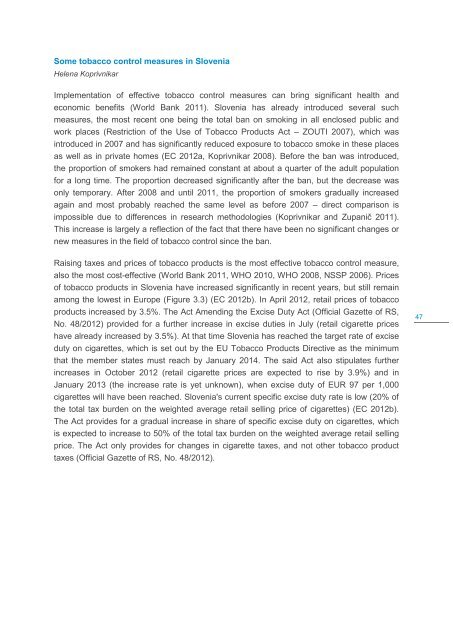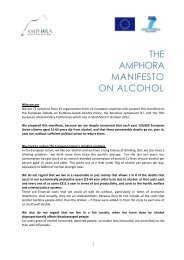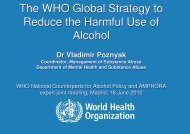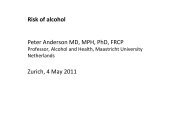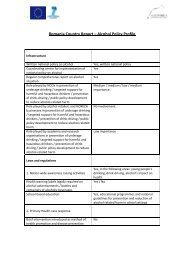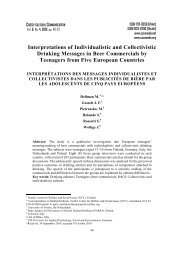Download full text - amphoraproject.net
Download full text - amphoraproject.net
Download full text - amphoraproject.net
Create successful ePaper yourself
Turn your PDF publications into a flip-book with our unique Google optimized e-Paper software.
Some tobacco control measures in SloveniaHelena KoprivnikarImplementation of effective tobacco control measures can bring significant health andeconomic benefits (World Bank 2011). Slovenia has already introduced several suchmeasures, the most recent one being the total ban on smoking in all enclosed public andwork places (Restriction of the Use of Tobacco Products Act – ZOUTI 2007), which wasintroduced in 2007 and has significantly reduced exposure to tobacco smoke in these placesas well as in private homes (EC 2012a, Koprivnikar 2008). Before the ban was introduced,the proportion of smokers had remained constant at about a quarter of the adult populationfor a long time. The proportion decreased significantly after the ban, but the decrease wasonly temporary. After 2008 and until 2011, the proportion of smokers gradually increasedagain and most probably reached the same level as before 2007 – direct comparison isimpossible due to differences in research methodologies (Koprivnikar and Zupanič 2011).This increase is largely a reflection of the fact that there have been no significant changes ornew measures in the field of tobacco control since the ban.Raising taxes and prices of tobacco products is the most effective tobacco control measure,also the most cost-effective (World Bank 2011, WHO 2010, WHO 2008, NSSP 2006). Pricesof tobacco products in Slovenia have increased significantly in recent years, but still remainamong the lowest in Europe (Figure 3.3) (EC 2012b). In April 2012, retail prices of tobaccoproducts increased by 3.5%. The Act Amending the Excise Duty Act (Official Gazette of RS,No. 48/2012) provided for a further increase in excise duties in July (retail cigarette priceshave already increased by 3.5%). At that time Slovenia has reached the target rate of exciseduty on cigarettes, which is set out by the EU Tobacco Products Directive as the minimumthat the member states must reach by January 2014. The said Act also stipulates furtherincreases in October 2012 (retail cigarette prices are expected to rise by 3.9%) and inJanuary 2013 (the increase rate is yet unknown), when excise duty of EUR 97 per 1,000cigarettes will have been reached. Slovenia's current specific excise duty rate is low (20% ofthe total tax burden on the weighted average retail selling price of cigarettes) (EC 2012b).The Act provides for a gradual increase in share of specific excise duty on cigarettes, whichis expected to increase to 50% of the total tax burden on the weighted average retail sellingprice. The Act only provides for changes in cigarette taxes, and not other tobacco producttaxes (Official Gazette of RS, No. 48/2012).47


